Strategic Analysis of Qantas Airways Using Porter's Five Forces Model
VerifiedAdded on 2023/01/10
|8
|1482
|74
Report
AI Summary
This report provides a strategic analysis of Qantas Airways, a leading Australian airline, utilizing Porter's Five Forces model to assess its competitive environment. The analysis examines the bargaining power of buyers and suppliers, the threat of new entrants and substitutes, and the rivalry among competitors within the aviation industry. The report identifies the usefulness and limitations of the model, highlighting Qantas's market position and the importance of customer satisfaction. The report concludes with recommendations for Qantas to enhance its marketing strategies and adapt to industry dynamics, emphasizing the need for innovation and customer-centric approaches to maintain a competitive edge. The analysis is grounded in academic literature and provides a comprehensive overview of Qantas's strategic landscape.
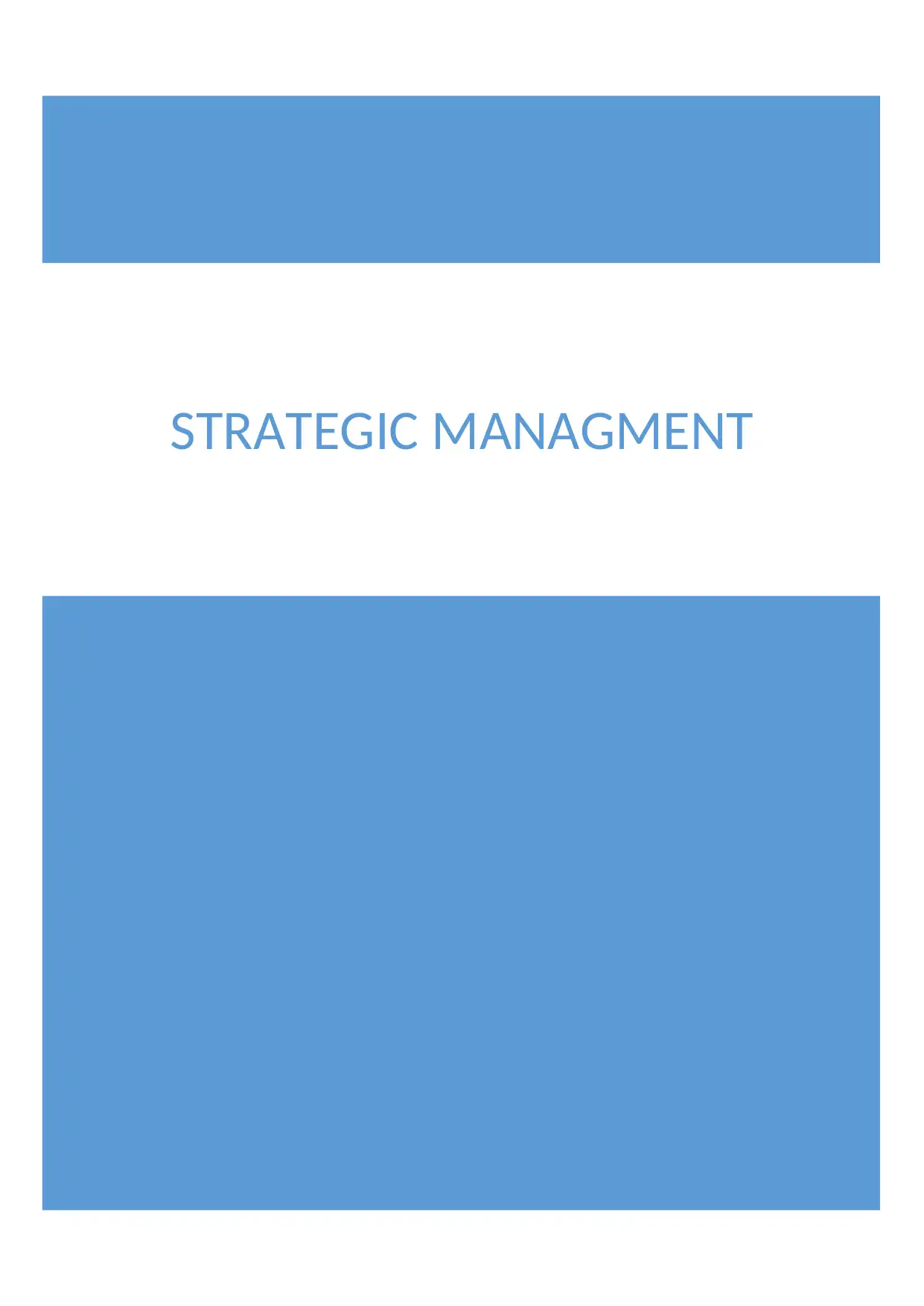
STRATEGIC MANAGMENT
Paraphrase This Document
Need a fresh take? Get an instant paraphrase of this document with our AI Paraphraser
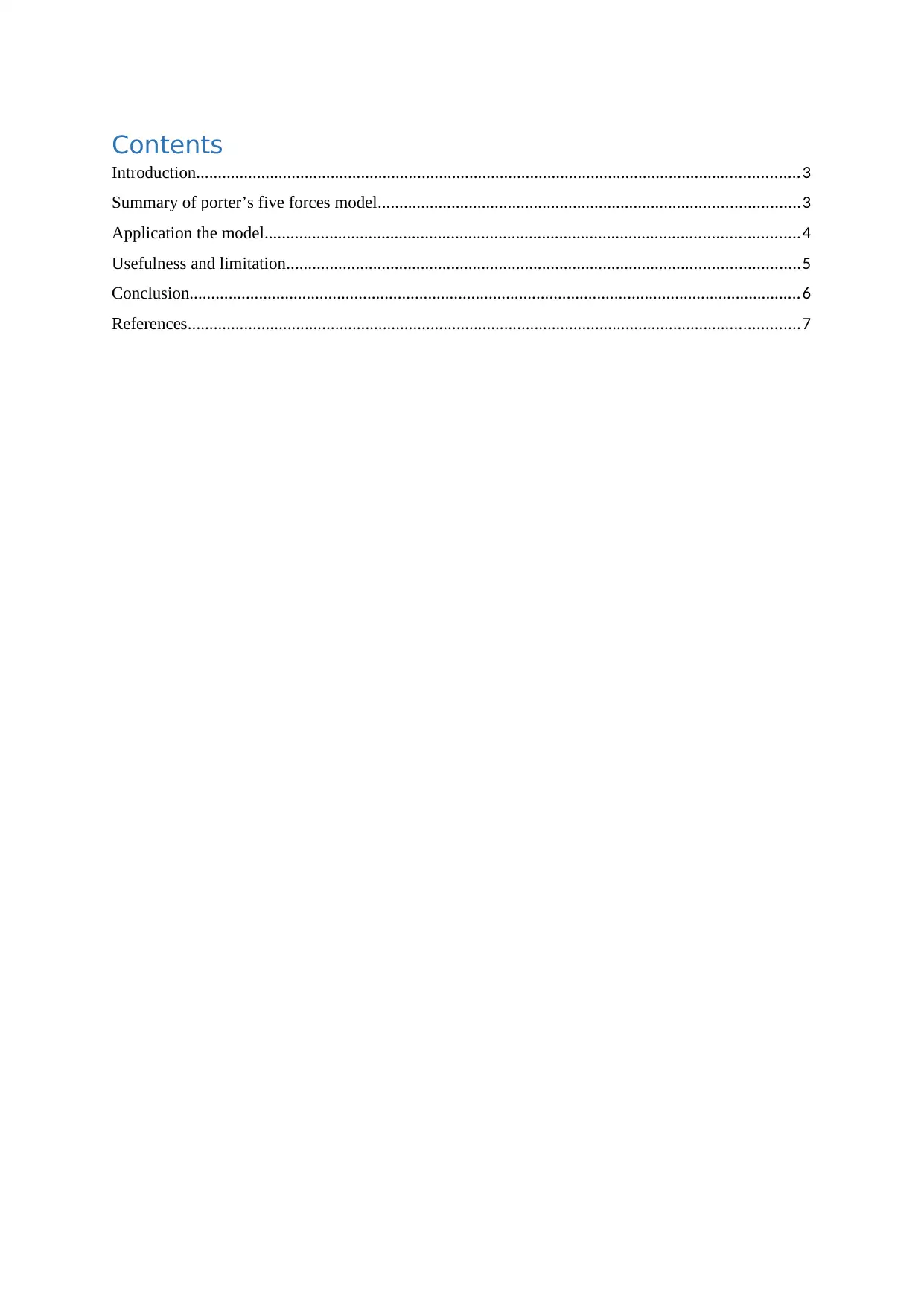
Contents
Introduction...........................................................................................................................................3
Summary of porter’s five forces model.................................................................................................3
Application the model...........................................................................................................................4
Usefulness and limitation......................................................................................................................5
Conclusion.............................................................................................................................................6
References.............................................................................................................................................7
Introduction...........................................................................................................................................3
Summary of porter’s five forces model.................................................................................................3
Application the model...........................................................................................................................4
Usefulness and limitation......................................................................................................................5
Conclusion.............................................................................................................................................6
References.............................................................................................................................................7
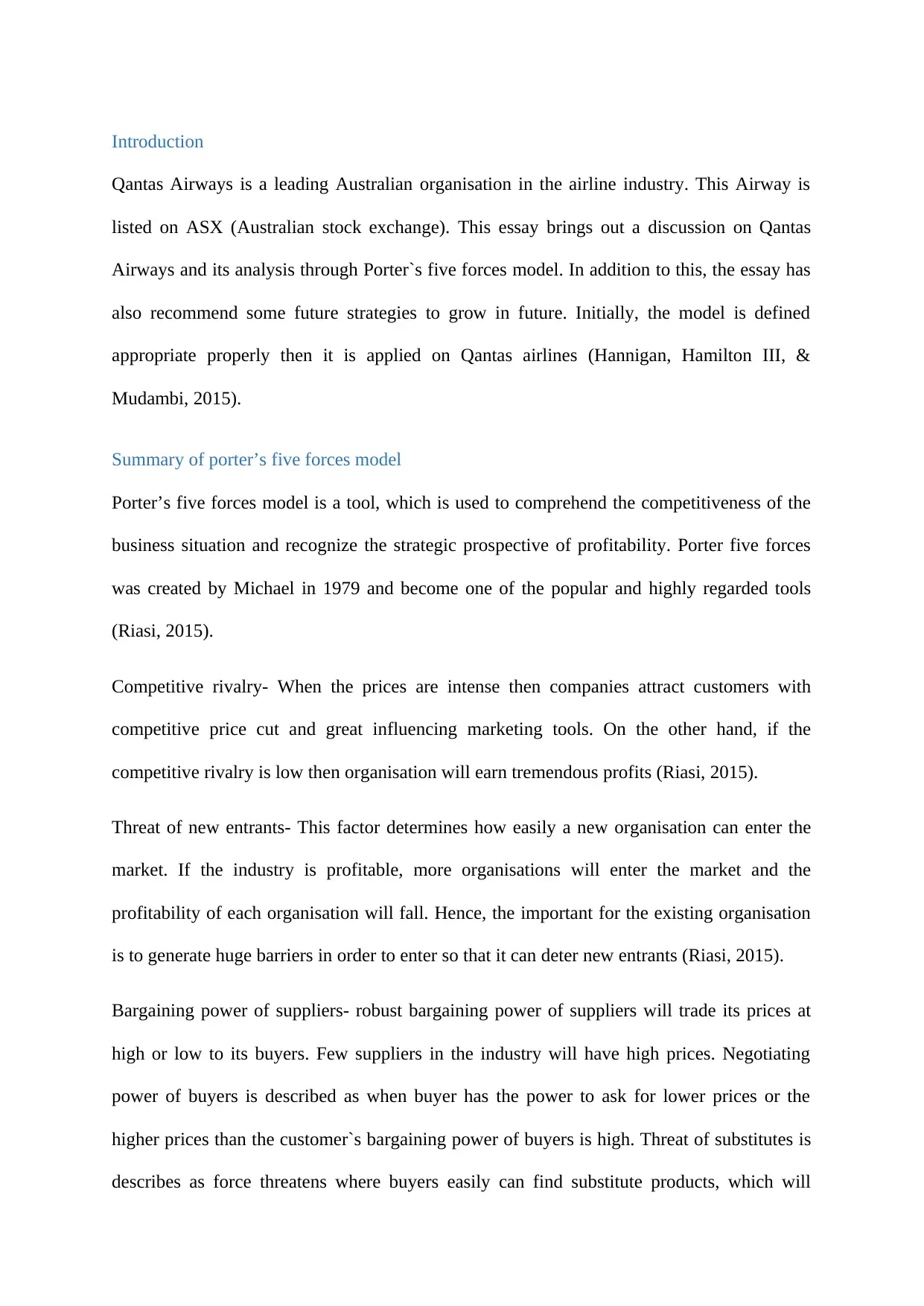
Introduction
Qantas Airways is a leading Australian organisation in the airline industry. This Airway is
listed on ASX (Australian stock exchange). This essay brings out a discussion on Qantas
Airways and its analysis through Porter`s five forces model. In addition to this, the essay has
also recommend some future strategies to grow in future. Initially, the model is defined
appropriate properly then it is applied on Qantas airlines (Hannigan, Hamilton III, &
Mudambi, 2015).
Summary of porter’s five forces model
Porter’s five forces model is a tool, which is used to comprehend the competitiveness of the
business situation and recognize the strategic prospective of profitability. Porter five forces
was created by Michael in 1979 and become one of the popular and highly regarded tools
(Riasi, 2015).
Competitive rivalry- When the prices are intense then companies attract customers with
competitive price cut and great influencing marketing tools. On the other hand, if the
competitive rivalry is low then organisation will earn tremendous profits (Riasi, 2015).
Threat of new entrants- This factor determines how easily a new organisation can enter the
market. If the industry is profitable, more organisations will enter the market and the
profitability of each organisation will fall. Hence, the important for the existing organisation
is to generate huge barriers in order to enter so that it can deter new entrants (Riasi, 2015).
Bargaining power of suppliers- robust bargaining power of suppliers will trade its prices at
high or low to its buyers. Few suppliers in the industry will have high prices. Negotiating
power of buyers is described as when buyer has the power to ask for lower prices or the
higher prices than the customer`s bargaining power of buyers is high. Threat of substitutes is
describes as force threatens where buyers easily can find substitute products, which will
Qantas Airways is a leading Australian organisation in the airline industry. This Airway is
listed on ASX (Australian stock exchange). This essay brings out a discussion on Qantas
Airways and its analysis through Porter`s five forces model. In addition to this, the essay has
also recommend some future strategies to grow in future. Initially, the model is defined
appropriate properly then it is applied on Qantas airlines (Hannigan, Hamilton III, &
Mudambi, 2015).
Summary of porter’s five forces model
Porter’s five forces model is a tool, which is used to comprehend the competitiveness of the
business situation and recognize the strategic prospective of profitability. Porter five forces
was created by Michael in 1979 and become one of the popular and highly regarded tools
(Riasi, 2015).
Competitive rivalry- When the prices are intense then companies attract customers with
competitive price cut and great influencing marketing tools. On the other hand, if the
competitive rivalry is low then organisation will earn tremendous profits (Riasi, 2015).
Threat of new entrants- This factor determines how easily a new organisation can enter the
market. If the industry is profitable, more organisations will enter the market and the
profitability of each organisation will fall. Hence, the important for the existing organisation
is to generate huge barriers in order to enter so that it can deter new entrants (Riasi, 2015).
Bargaining power of suppliers- robust bargaining power of suppliers will trade its prices at
high or low to its buyers. Few suppliers in the industry will have high prices. Negotiating
power of buyers is described as when buyer has the power to ask for lower prices or the
higher prices than the customer`s bargaining power of buyers is high. Threat of substitutes is
describes as force threatens where buyers easily can find substitute products, which will
⊘ This is a preview!⊘
Do you want full access?
Subscribe today to unlock all pages.

Trusted by 1+ million students worldwide
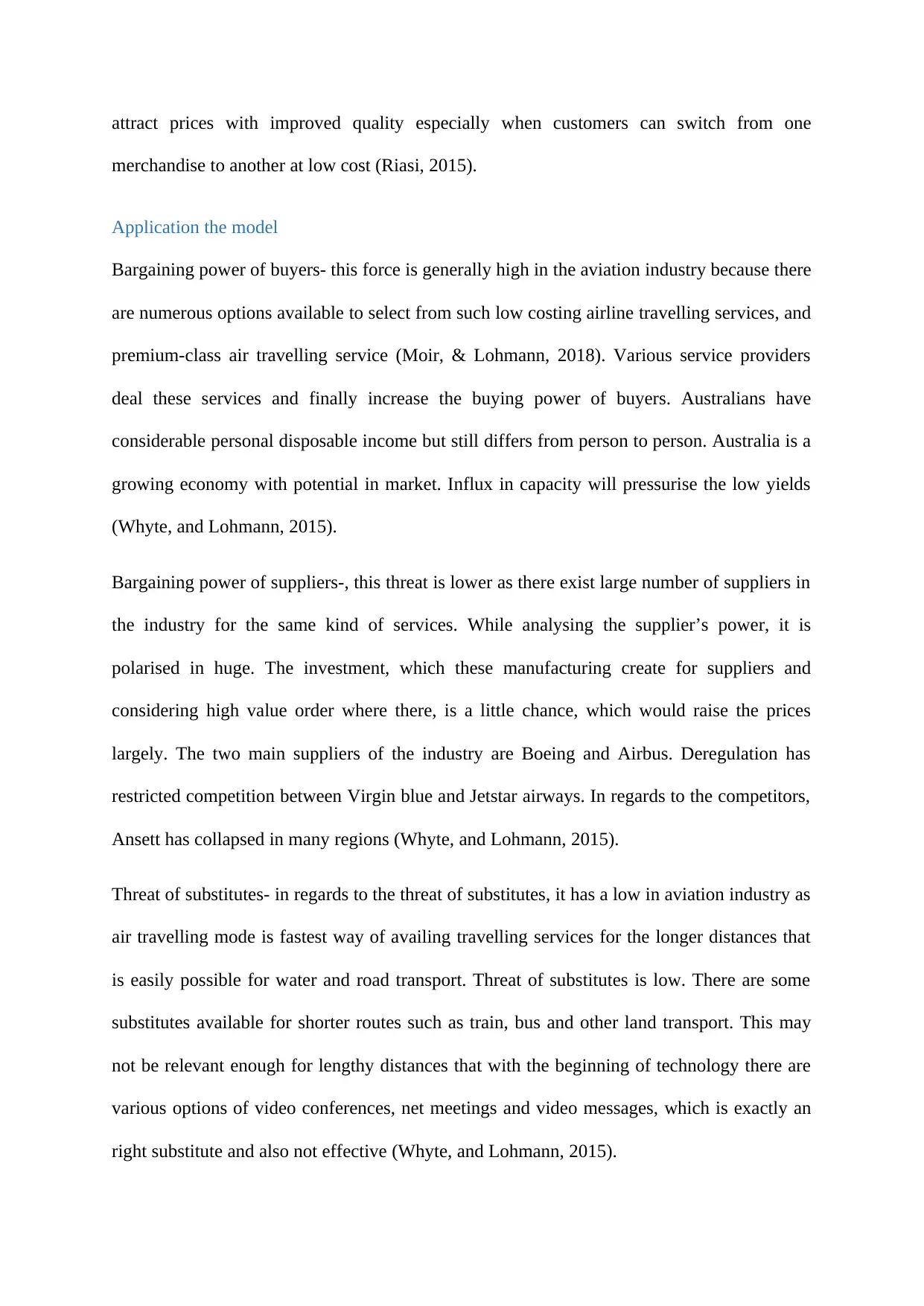
attract prices with improved quality especially when customers can switch from one
merchandise to another at low cost (Riasi, 2015).
Application the model
Bargaining power of buyers- this force is generally high in the aviation industry because there
are numerous options available to select from such low costing airline travelling services, and
premium-class air travelling service (Moir, & Lohmann, 2018). Various service providers
deal these services and finally increase the buying power of buyers. Australians have
considerable personal disposable income but still differs from person to person. Australia is a
growing economy with potential in market. Influx in capacity will pressurise the low yields
(Whyte, and Lohmann, 2015).
Bargaining power of suppliers-, this threat is lower as there exist large number of suppliers in
the industry for the same kind of services. While analysing the supplier’s power, it is
polarised in huge. The investment, which these manufacturing create for suppliers and
considering high value order where there, is a little chance, which would raise the prices
largely. The two main suppliers of the industry are Boeing and Airbus. Deregulation has
restricted competition between Virgin blue and Jetstar airways. In regards to the competitors,
Ansett has collapsed in many regions (Whyte, and Lohmann, 2015).
Threat of substitutes- in regards to the threat of substitutes, it has a low in aviation industry as
air travelling mode is fastest way of availing travelling services for the longer distances that
is easily possible for water and road transport. Threat of substitutes is low. There are some
substitutes available for shorter routes such as train, bus and other land transport. This may
not be relevant enough for lengthy distances that with the beginning of technology there are
various options of video conferences, net meetings and video messages, which is exactly an
right substitute and also not effective (Whyte, and Lohmann, 2015).
merchandise to another at low cost (Riasi, 2015).
Application the model
Bargaining power of buyers- this force is generally high in the aviation industry because there
are numerous options available to select from such low costing airline travelling services, and
premium-class air travelling service (Moir, & Lohmann, 2018). Various service providers
deal these services and finally increase the buying power of buyers. Australians have
considerable personal disposable income but still differs from person to person. Australia is a
growing economy with potential in market. Influx in capacity will pressurise the low yields
(Whyte, and Lohmann, 2015).
Bargaining power of suppliers-, this threat is lower as there exist large number of suppliers in
the industry for the same kind of services. While analysing the supplier’s power, it is
polarised in huge. The investment, which these manufacturing create for suppliers and
considering high value order where there, is a little chance, which would raise the prices
largely. The two main suppliers of the industry are Boeing and Airbus. Deregulation has
restricted competition between Virgin blue and Jetstar airways. In regards to the competitors,
Ansett has collapsed in many regions (Whyte, and Lohmann, 2015).
Threat of substitutes- in regards to the threat of substitutes, it has a low in aviation industry as
air travelling mode is fastest way of availing travelling services for the longer distances that
is easily possible for water and road transport. Threat of substitutes is low. There are some
substitutes available for shorter routes such as train, bus and other land transport. This may
not be relevant enough for lengthy distances that with the beginning of technology there are
various options of video conferences, net meetings and video messages, which is exactly an
right substitute and also not effective (Whyte, and Lohmann, 2015).
Paraphrase This Document
Need a fresh take? Get an instant paraphrase of this document with our AI Paraphraser
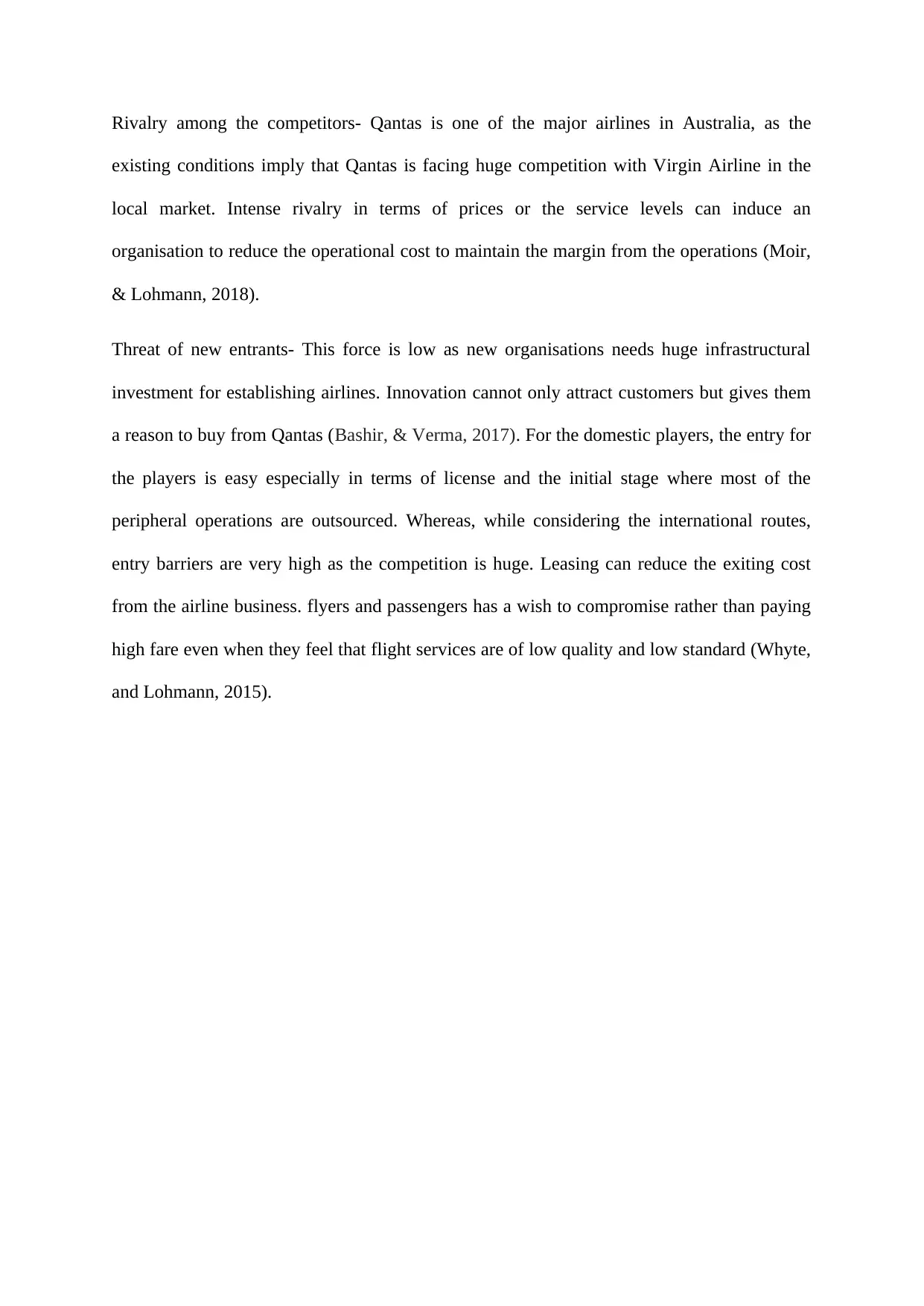
Rivalry among the competitors- Qantas is one of the major airlines in Australia, as the
existing conditions imply that Qantas is facing huge competition with Virgin Airline in the
local market. Intense rivalry in terms of prices or the service levels can induce an
organisation to reduce the operational cost to maintain the margin from the operations (Moir,
& Lohmann, 2018).
Threat of new entrants- This force is low as new organisations needs huge infrastructural
investment for establishing airlines. Innovation cannot only attract customers but gives them
a reason to buy from Qantas (Bashir, & Verma, 2017). For the domestic players, the entry for
the players is easy especially in terms of license and the initial stage where most of the
peripheral operations are outsourced. Whereas, while considering the international routes,
entry barriers are very high as the competition is huge. Leasing can reduce the exiting cost
from the airline business. flyers and passengers has a wish to compromise rather than paying
high fare even when they feel that flight services are of low quality and low standard (Whyte,
and Lohmann, 2015).
existing conditions imply that Qantas is facing huge competition with Virgin Airline in the
local market. Intense rivalry in terms of prices or the service levels can induce an
organisation to reduce the operational cost to maintain the margin from the operations (Moir,
& Lohmann, 2018).
Threat of new entrants- This force is low as new organisations needs huge infrastructural
investment for establishing airlines. Innovation cannot only attract customers but gives them
a reason to buy from Qantas (Bashir, & Verma, 2017). For the domestic players, the entry for
the players is easy especially in terms of license and the initial stage where most of the
peripheral operations are outsourced. Whereas, while considering the international routes,
entry barriers are very high as the competition is huge. Leasing can reduce the exiting cost
from the airline business. flyers and passengers has a wish to compromise rather than paying
high fare even when they feel that flight services are of low quality and low standard (Whyte,
and Lohmann, 2015).

Usefulness and limitation
(Source: CAPA, 2016)
Qantas is a market leader in the airline industry that considers market details to establish
certain strategies for pricing and marketing. The main goal of the airline services is to satisfy
the needs of customers, which a business can use to gain competitive advantage. With
increasing demand in air transport for the next 20 years, Qantas have the ability to lead the
airline industry. Qantas`s domestic group has proven, the group is giving satisfactory returns
to the shareholders. The company has built its leading position in the (Australia) domestic
market (Boin, Coleman, Delfassy, and Palombo, 2017). The profits of the company is
increasing because of Qantas loyalty with the increase in the number of Asia`s people.
Create add-on services- the company should have install setup in order to support the
customers with unique services by offerings.
Faster service- Fat services to the customers attract them for their convenience. Making new
strategic offers can deliver products to the customers as soon as possible to extract and wipe
(Source: CAPA, 2016)
Qantas is a market leader in the airline industry that considers market details to establish
certain strategies for pricing and marketing. The main goal of the airline services is to satisfy
the needs of customers, which a business can use to gain competitive advantage. With
increasing demand in air transport for the next 20 years, Qantas have the ability to lead the
airline industry. Qantas`s domestic group has proven, the group is giving satisfactory returns
to the shareholders. The company has built its leading position in the (Australia) domestic
market (Boin, Coleman, Delfassy, and Palombo, 2017). The profits of the company is
increasing because of Qantas loyalty with the increase in the number of Asia`s people.
Create add-on services- the company should have install setup in order to support the
customers with unique services by offerings.
Faster service- Fat services to the customers attract them for their convenience. Making new
strategic offers can deliver products to the customers as soon as possible to extract and wipe
⊘ This is a preview!⊘
Do you want full access?
Subscribe today to unlock all pages.

Trusted by 1+ million students worldwide
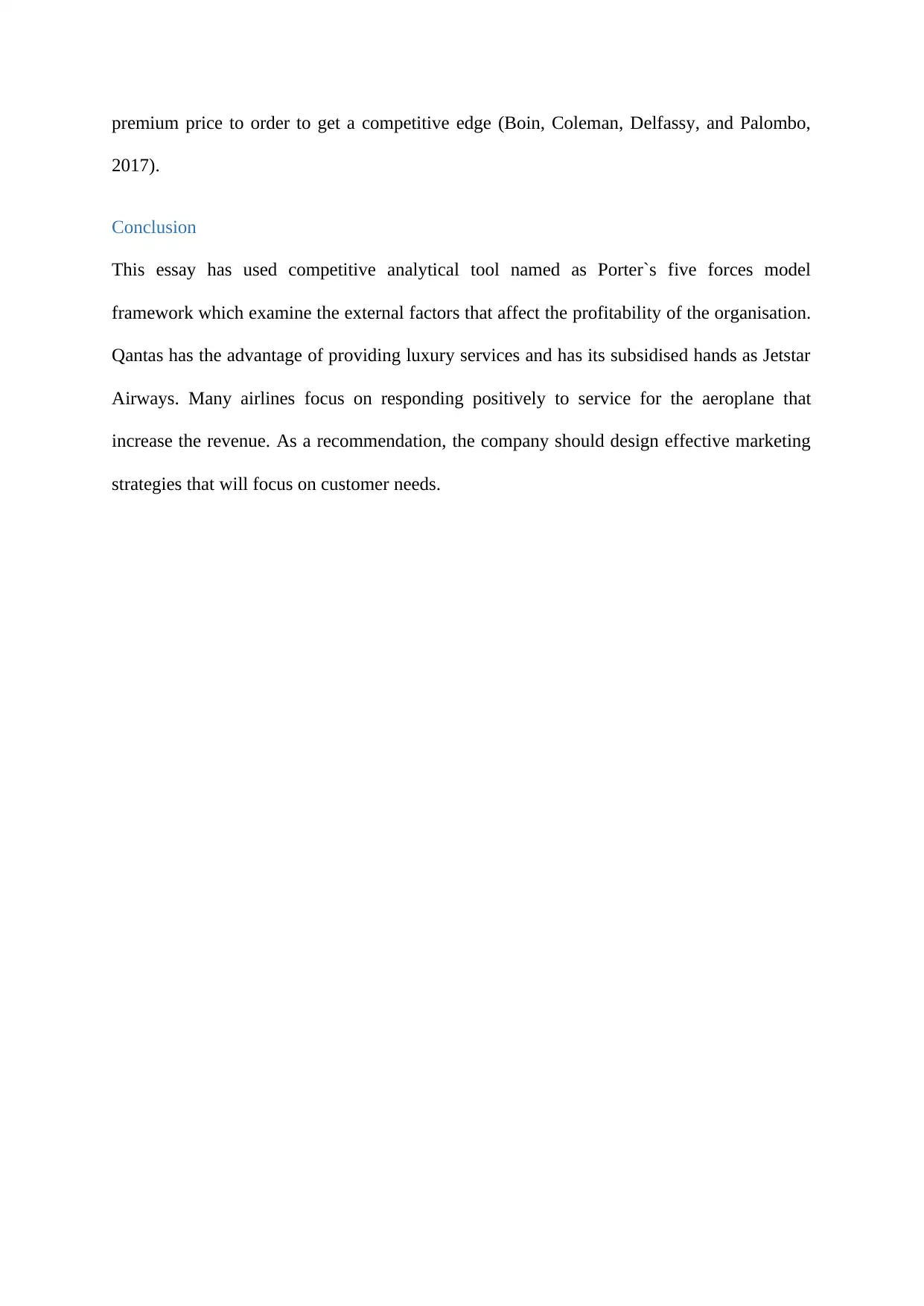
premium price to order to get a competitive edge (Boin, Coleman, Delfassy, and Palombo,
2017).
Conclusion
This essay has used competitive analytical tool named as Porter`s five forces model
framework which examine the external factors that affect the profitability of the organisation.
Qantas has the advantage of providing luxury services and has its subsidised hands as Jetstar
Airways. Many airlines focus on responding positively to service for the aeroplane that
increase the revenue. As a recommendation, the company should design effective marketing
strategies that will focus on customer needs.
2017).
Conclusion
This essay has used competitive analytical tool named as Porter`s five forces model
framework which examine the external factors that affect the profitability of the organisation.
Qantas has the advantage of providing luxury services and has its subsidised hands as Jetstar
Airways. Many airlines focus on responding positively to service for the aeroplane that
increase the revenue. As a recommendation, the company should design effective marketing
strategies that will focus on customer needs.
Paraphrase This Document
Need a fresh take? Get an instant paraphrase of this document with our AI Paraphraser
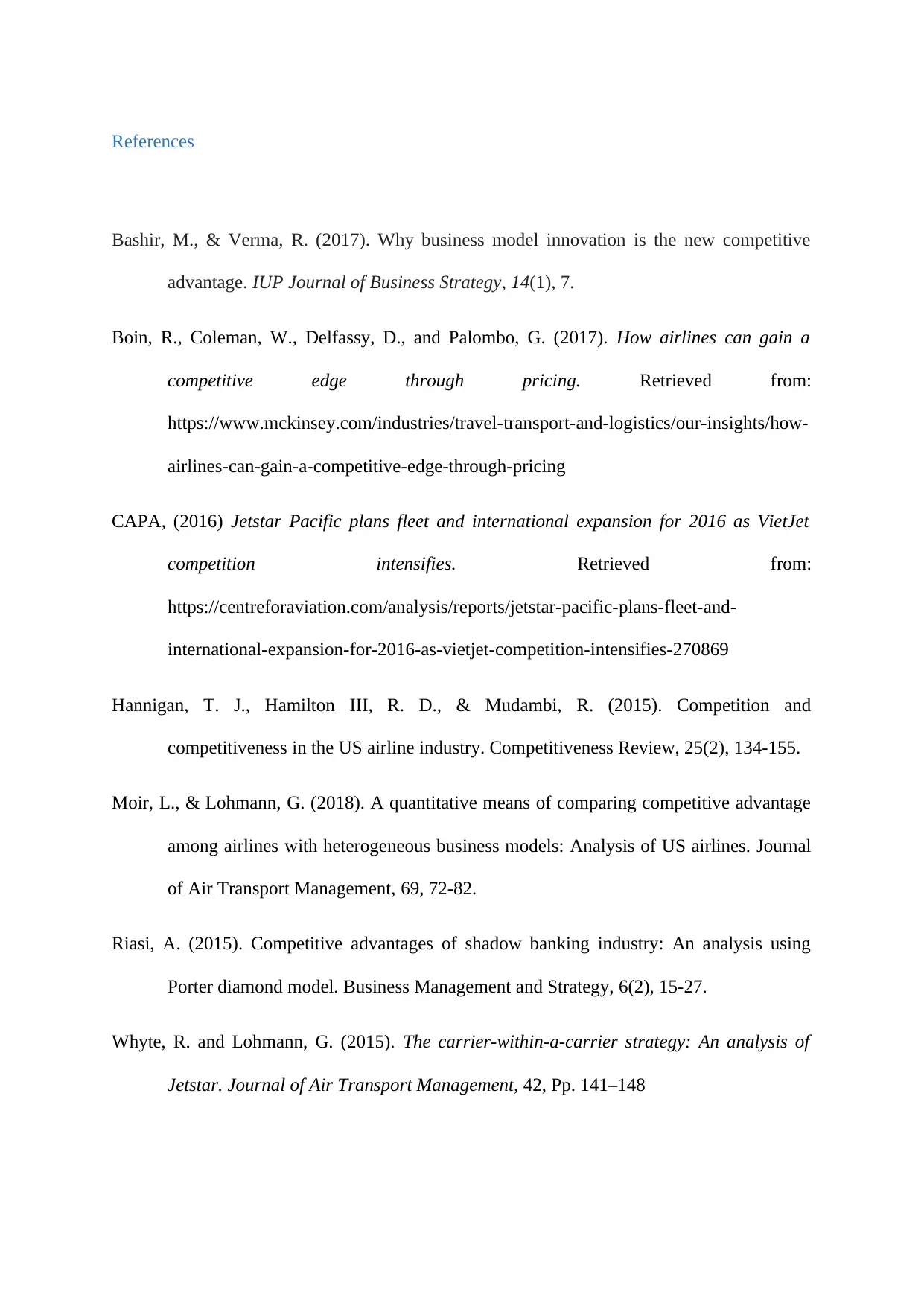
References
Bashir, M., & Verma, R. (2017). Why business model innovation is the new competitive
advantage. IUP Journal of Business Strategy, 14(1), 7.
Boin, R., Coleman, W., Delfassy, D., and Palombo, G. (2017). How airlines can gain a
competitive edge through pricing. Retrieved from:
https://www.mckinsey.com/industries/travel-transport-and-logistics/our-insights/how-
airlines-can-gain-a-competitive-edge-through-pricing
CAPA, (2016) Jetstar Pacific plans fleet and international expansion for 2016 as VietJet
competition intensifies. Retrieved from:
https://centreforaviation.com/analysis/reports/jetstar-pacific-plans-fleet-and-
international-expansion-for-2016-as-vietjet-competition-intensifies-270869
Hannigan, T. J., Hamilton III, R. D., & Mudambi, R. (2015). Competition and
competitiveness in the US airline industry. Competitiveness Review, 25(2), 134-155.
Moir, L., & Lohmann, G. (2018). A quantitative means of comparing competitive advantage
among airlines with heterogeneous business models: Analysis of US airlines. Journal
of Air Transport Management, 69, 72-82.
Riasi, A. (2015). Competitive advantages of shadow banking industry: An analysis using
Porter diamond model. Business Management and Strategy, 6(2), 15-27.
Whyte, R. and Lohmann, G. (2015). The carrier-within-a-carrier strategy: An analysis of
Jetstar. Journal of Air Transport Management, 42, Pp. 141–148
Bashir, M., & Verma, R. (2017). Why business model innovation is the new competitive
advantage. IUP Journal of Business Strategy, 14(1), 7.
Boin, R., Coleman, W., Delfassy, D., and Palombo, G. (2017). How airlines can gain a
competitive edge through pricing. Retrieved from:
https://www.mckinsey.com/industries/travel-transport-and-logistics/our-insights/how-
airlines-can-gain-a-competitive-edge-through-pricing
CAPA, (2016) Jetstar Pacific plans fleet and international expansion for 2016 as VietJet
competition intensifies. Retrieved from:
https://centreforaviation.com/analysis/reports/jetstar-pacific-plans-fleet-and-
international-expansion-for-2016-as-vietjet-competition-intensifies-270869
Hannigan, T. J., Hamilton III, R. D., & Mudambi, R. (2015). Competition and
competitiveness in the US airline industry. Competitiveness Review, 25(2), 134-155.
Moir, L., & Lohmann, G. (2018). A quantitative means of comparing competitive advantage
among airlines with heterogeneous business models: Analysis of US airlines. Journal
of Air Transport Management, 69, 72-82.
Riasi, A. (2015). Competitive advantages of shadow banking industry: An analysis using
Porter diamond model. Business Management and Strategy, 6(2), 15-27.
Whyte, R. and Lohmann, G. (2015). The carrier-within-a-carrier strategy: An analysis of
Jetstar. Journal of Air Transport Management, 42, Pp. 141–148
1 out of 8
Related Documents
Your All-in-One AI-Powered Toolkit for Academic Success.
+13062052269
info@desklib.com
Available 24*7 on WhatsApp / Email
![[object Object]](/_next/static/media/star-bottom.7253800d.svg)
Unlock your academic potential
Copyright © 2020–2025 A2Z Services. All Rights Reserved. Developed and managed by ZUCOL.





